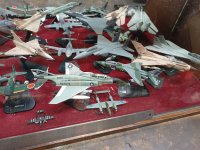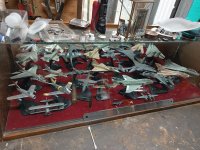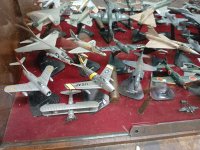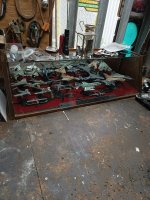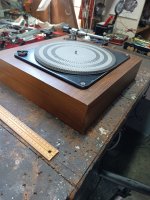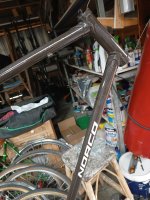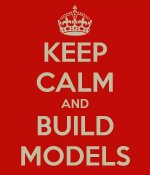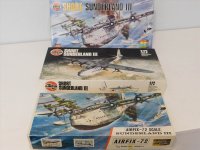P.S. I'm not saying you definitely need 6BA, you must measure the current screw diameter then go searching in your local store.
When I cut screws, I usually like to thread a nut on first. I then unscew this after the cut, to clean off any swarf, as well as minimising possible cross thread.You hold the unwanted end of the screw securely in a vice and cut to required length with hacksaw.
Take your headshell to your local ironmonger store to try different screws for fit.
I've used an angle grinder for larger, but 6BA might need something finer.
In the mean time I'll keep an eye out for spare screws from salvage. 🙂
Re the swarf, yes, that's called 'using the nut'! 😀
Have you measured the diameter of the screw and compared it with the metric (M) screw identifier I attached? If so, what is the diameter and what M screw size does it match?
Forget about the 6BA, that was a mistake on my part and the screw is most probably metric.
P.S. I'm not clear why we're looking for a screw at all when the model of cartridge is unknown and you don't appear to have a stylus assembly for it. Won't you need a different cartridge and an ingenious way of mounting it to the headshell?
Have you measured the diameter of the screw and compared it with the metric (M) screw identifier I attached? If so, what is the diameter and what M screw size does it match?
Forget about the 6BA, that was a mistake on my part and the screw is most probably metric.
P.S. I'm not clear why we're looking for a screw at all when the model of cartridge is unknown and you don't appear to have a stylus assembly for it. Won't you need a different cartridge and an ingenious way of mounting it to the headshell?
Thanks for the photos, that may be a white stylus assembly I see in the middle image.
The correct description of your turntable is Skandinavisk Radio & Television (SRT) type 605. The otherwise identical Labcraft 605, made by SRT, has a 9" platter rather than the SRT's 12" one.
There are some nice images on US Audio Mart: https://www.usaudiomart.com/details...-radio-amp-television-srt-type-605-turntable/
And there are details on Radio Museum: https://www.radiomuseum.org/r/hismasters_chassis_605.html
The tone arm and pickup cartridge are from B&O and a circuit board underneath houses a preamplifier which allows connection to the auxilliary (aux), or line level, input of an amplifier.
Also, the jack socket output you spoke of appears to be for headphones.
There's lots of mechanics and electronics to fettle - looks like you've got yourself a corker of a project there, Cliff!
The correct description of your turntable is Skandinavisk Radio & Television (SRT) type 605. The otherwise identical Labcraft 605, made by SRT, has a 9" platter rather than the SRT's 12" one.
There are some nice images on US Audio Mart: https://www.usaudiomart.com/details...-radio-amp-television-srt-type-605-turntable/
And there are details on Radio Museum: https://www.radiomuseum.org/r/hismasters_chassis_605.html
The tone arm and pickup cartridge are from B&O and a circuit board underneath houses a preamplifier which allows connection to the auxilliary (aux), or line level, input of an amplifier.
Also, the jack socket output you spoke of appears to be for headphones.
There's lots of mechanics and electronics to fettle - looks like you've got yourself a corker of a project there, Cliff!
P.S. I'm not clear...
Looking again at your headshell, I see that removing the two retaining screws will release the old cartridge from the metal mounting plate and then you should be able to fit a cartridge like the AT91(R) in its place, but using longer screws. In that case you require three screws of longer length!
The AT91(R) is held in place with 2 screws ½ inch apart on each side of the cartridge. This standard ½ inch mount must surely apply to your headshell.
I'm inundated with issues at the moment and haven't been able to focus on the turntable.Looking again at your headshell, I see that removing the two retaining screws will release the old cartridge from the metal mounting plate and then you should be able to fit a cartridge like the AT91(R) in its place, but using longer screws. In that case you require three screws of longer length!
The AT91(R) is held in place with 2 screws ½ inch apart on each side of the cartridge. This standard ½ inch mount must surely apply to your headshell.
The UT603 meter arrived today, so have lots of measurements to arrange. 👍
In terms of the headshell cartridge, I have the original stylus, removed for safety, so will try using this before attempting cartridge upgrade.
The adapter ensemble will allow me to hook up this turntable to an Amp for a road test.
Everything not as dour as it could be but fingers crossed. 🙂
PS: Love your input.
OK, but note that this deck is said to have a headphone output, which I presume is the jack socket.
Does that mean I'll need to be aware of this TT's output volume?OK, but note that this deck is said to have a headphone output, which I presume is the jack socket.
Would this TT's output be better suited to Aux, rather than Phono, or it was their way of removing competition from TT's of other brands?
Certainly keep the volume near minimum till you see what's what.
Doesn't the TT have dedicated cables to connect to the amplifier in addition to having a jack socket? I'd like to see photos showing the jack socket as well as all cables exiting the plinth.
Since there is obvious electronic circuitry in your photograph, I presume it provides a preamp (to enable connection to an aux input rather than a phono input) and/or a headphone amp. I did read there was a preamp during my research.
If using the jack, connect it to aux - or why not simply try plugging in headphones?
Doesn't the TT have dedicated cables to connect to the amplifier in addition to having a jack socket? I'd like to see photos showing the jack socket as well as all cables exiting the plinth.
Since there is obvious electronic circuitry in your photograph, I presume it provides a preamp (to enable connection to an aux input rather than a phono input) and/or a headphone amp. I did read there was a preamp during my research.
If using the jack, connect it to aux - or why not simply try plugging in headphones?
Hi Galu.If using the jack, connect it to aux - or why not simply try plugging in headphones?
I've examined the plinth carefully but the only cables are the 240v electric cable, & another cable terminating on a headphone style 6.5mm male socket.
If it accepted headphones, wouldn't the fitted socket be female?
Attachments
-
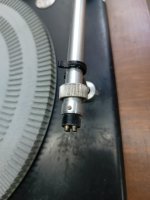 Lab Craft Model 605 a.jpg213 KB · Views: 87
Lab Craft Model 605 a.jpg213 KB · Views: 87 -
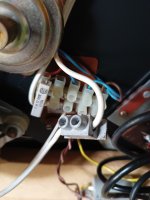 Lab Craft Model 605 b.jpg202.5 KB · Views: 81
Lab Craft Model 605 b.jpg202.5 KB · Views: 81 -
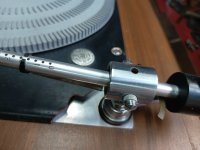 Lab Craft Model 605 c.jpg247.5 KB · Views: 95
Lab Craft Model 605 c.jpg247.5 KB · Views: 95 -
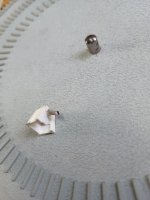 Lab Craft Model 605 d.jpg272 KB · Views: 82
Lab Craft Model 605 d.jpg272 KB · Views: 82 -
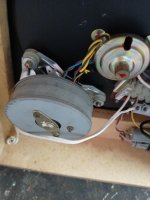 Lab Craft Model 605 e.jpg253.9 KB · Views: 90
Lab Craft Model 605 e.jpg253.9 KB · Views: 90 -
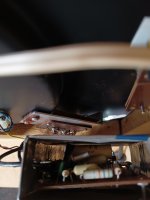 Lab Craft Model 605 f.jpg206.7 KB · Views: 86
Lab Craft Model 605 f.jpg206.7 KB · Views: 86 -
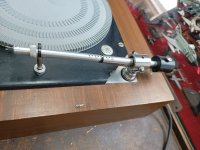 Lab Craft Model 605 g.jpg352.5 KB · Views: 86
Lab Craft Model 605 g.jpg352.5 KB · Views: 86 -
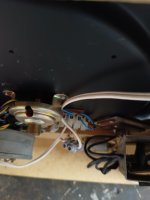 Lab Craft Model 605 h.jpg192.4 KB · Views: 85
Lab Craft Model 605 h.jpg192.4 KB · Views: 85
I'm hoping the female 6.5mm to 2 RCA cable I'm putting together will allow quick conversion to regular Amp?If using the jack, connect it to aux -
Attachments
-
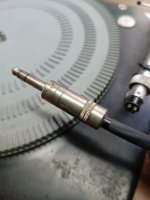 Lab Craft Model 605 i.jpg204.7 KB · Views: 80
Lab Craft Model 605 i.jpg204.7 KB · Views: 80 -
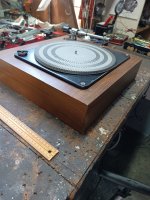 Lab Craft Model 605 j.jpg428 KB · Views: 86
Lab Craft Model 605 j.jpg428 KB · Views: 86 -
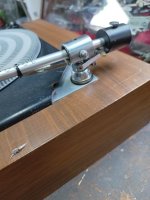 Lab Craft Model 605 k.jpg279.7 KB · Views: 83
Lab Craft Model 605 k.jpg279.7 KB · Views: 83 -
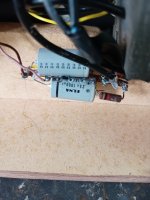 Lab Craft Model 605 l.jpg282.8 KB · Views: 77
Lab Craft Model 605 l.jpg282.8 KB · Views: 77 -
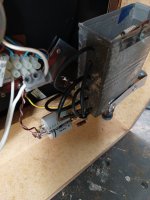 Lab Craft Model 605 m.jpg380.4 KB · Views: 74
Lab Craft Model 605 m.jpg380.4 KB · Views: 74 -
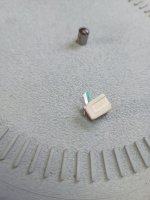 Lab Craft Model 605 n.jpg306.8 KB · Views: 83
Lab Craft Model 605 n.jpg306.8 KB · Views: 83 -
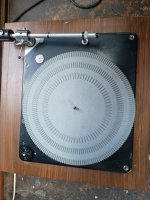 Lab Craft Model 605 o.jpg481.9 KB · Views: 89
Lab Craft Model 605 o.jpg481.9 KB · Views: 89 -
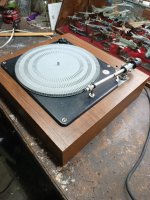 Lab Craft Model 605 p.jpg436.1 KB · Views: 93
Lab Craft Model 605 p.jpg436.1 KB · Views: 93
I'm interested in the collection of aircraft models I see in the background of your final photo, Cliff.
They look to be diecast scale models - am I correct?
Are you a collector, or is this collection one of your many 'finds'? ✈️
They look to be diecast scale models - am I correct?
Are you a collector, or is this collection one of your many 'finds'? ✈️
Mostly diecast.diecast scale models
I don't really collect per se, more that I like to surround myself visually pleasing things.
I'm concurrently working on restoring an old Norco bicycle.
Decals affixed, soon ready for clearcoat.
I spread myself thin over many things.
Currently waiting on the adapter in order to hook up the turntable.
Attachments
I'm a bit of a 'kit basher'. When I retired, I started collecting the plastic model kits that I had built, or had wanted to build, as a boy.
My modelling skills have not improved much over the years, but I do have a larger selection of tools and paints! 🙂
My modelling skills have not improved much over the years, but I do have a larger selection of tools and paints! 🙂
Attachments
Currently waiting on the adapter in order to hook up the turntable.
I presume that the wires emerging from the tonearm enter the preamp, and that the jack plug cable exits the preamp.
That particular detail is not visible in your photographs.
There's no telling how the preamp will sound, as the electronics may be in a bit of a state by now.
It may be that you will need to bypass the preamp altogether, so that the cartridge may be connected directly to the phono (MM) input of the amplifier.
A well secured terminal strip and a suitable length of twin screened cable, terminated with stereo RCA plugs, would do the job - similar to the Garrard arrangement shown below.
The two black cables on the left are the right (top) and left (bottom) channel screened cables. The fine wires on the right come from the tonearm/cartridge. The grey wire on the left can be used to connect the metal chassis of the turntable to the ground terminal of the amplifier if hum is found to be present.
Great tip.There's no telling how the preamp will sound, as the electronics may be in a bit of a state by now.
It may be that you will need to bypass the preamp altogether, so that the cartridge may be connected directly to the phono (MM) input of the amplifier.
A well secured terminal strip and a suitable length of twin screened cable, terminated with stereo RCA plugs, would do the job - similar to the Garrard arrangement shown below.
I'll run it as is to gauge its performance first.
Then bypass preamp if needed. 👍
Similar history, but gave the "new in the box" kits I had accumulated to a keen modeller who fell into ill health and lost his job.I'm a bit of a 'kit basher'. When I retired, I started collecting the plastic model kits that I had built, or had wanted to build, as a boy.
My modelling skills have not improved much over the years, but I do have a larger selection of tools and paints! 🙂
It helped him pull through a dark time but helped me, as I new I'd never find the time to build.
I had many favourites, but especially enjoyed the Avro Sunderland, HMS Ark Royal, & Avro Anson.
Should be able to test the turntable soon.
Time wise, hopefully the preamp is holding up.
That's the Short Sunderland, but I'll let you off! 😉
The Sunderland flying boat was a large model even in 1/72 scale, and was my favourite Airfix model that I built as a boy.
I have all three of the kits you mention in my 70 strong stash of unbuilt models.
My post retirement Short Sunderland is still in its film sealed box, but recently I've been toying with building it. But only after I get round to finishing the Westland Whirlwind twin-engined fighter and Boulton Paul Defiant turret fighter which are almost ready for their decals.
All of the mentioned kits are vintage mouldings which are very basic compared to the new mould Airfix kits, but I like to build them for nostalgic reasons.
Back to the turntable, would you really want to use the built in preamp when the amplifier amost certainly has a superior one behind its MM inputs?
The Sunderland flying boat was a large model even in 1/72 scale, and was my favourite Airfix model that I built as a boy.
I have all three of the kits you mention in my 70 strong stash of unbuilt models.
My post retirement Short Sunderland is still in its film sealed box, but recently I've been toying with building it. But only after I get round to finishing the Westland Whirlwind twin-engined fighter and Boulton Paul Defiant turret fighter which are almost ready for their decals.
All of the mentioned kits are vintage mouldings which are very basic compared to the new mould Airfix kits, but I like to build them for nostalgic reasons.
Back to the turntable, would you really want to use the built in preamp when the amplifier amost certainly has a superior one behind its MM inputs?
Attachments
Wow.That's the Short Sunderland, but I'll let you off! 😉
The Sunderland flying boat was a large model even in 1/72 scale, and was my favourite Airfix model that I built as a boy.
I have all three of the kits you mention in my 70 strong stash of unbuilt models.
My post retirement Short Sunderland is still in its film sealed box, but recently I've been toying with building it. But only after I get round to finishing the Westland Whirlwind twin-engined fighter and Boulton Paul Defiant turret fighter which are almost ready for their decals.
All of the mentioned kits are vintage mouldings which are very basic compared to the new mould Airfix kits, but I like to build them for nostalgic reasons.
Back to the turntable, would you really want to use the built in preamp when the amplifier amost certainly has a superior one behind its MM inputs?
We had similar experiences, backgrounds.
One thing with the Boulton Paul Defiant.
I wouldn't like to have been flying one in ww2. 🙁
Saturday mornings were always spent checking out the models available in our local town model shop.
Regarding TT preamp, I'll tke some photos which trace the signal path to work out from where I divert to direct RCA in order to access MM on Amp. 👍
- Home
- Source & Line
- Analogue Source
- Lab Craft Type 605 Scandinavian Turntable Headshell Issue?
